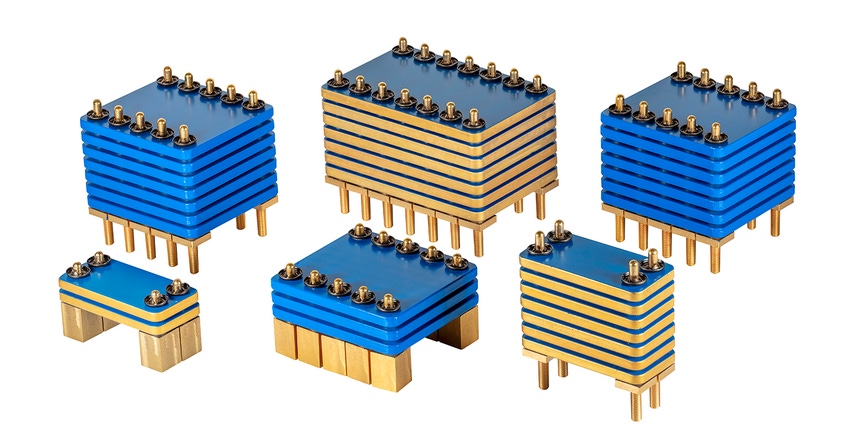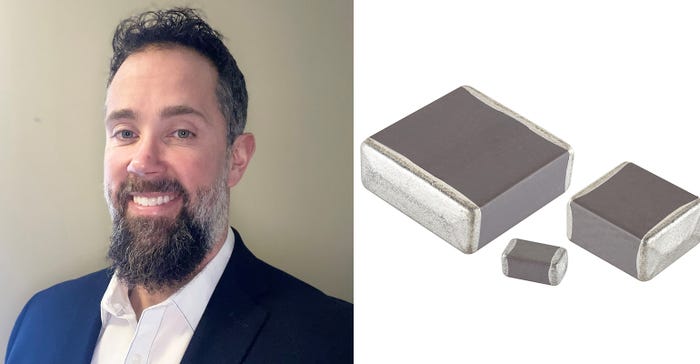As EVs Evolve, So Does Capacitor Capacity
An automotive expert for Knowles Precision Devices describes the new challenges and how they are being met.

EVs are impacting the breadth and direction of the supply chain for electric and electronics components. Companies such as Knowles Precision Devices are learning to navigate a growing and changing marketplace.
Knowles makes a range of capacitors, EMI filters and microwave devices including RF filters, splitters and couplers. The growing EV market has engaged the company’s capacitor business as higher temperatures inside the control circuits mean that conventional plastic film capacitors are no longer suitable for many applications, opening the door to increased use of multilayer ceramic capacitors (MLCCs), a mainstay of the Knowles product line.
In the runup to the 2022 North American Battery Show, Battery Technology spoke to Brandon Peeler, automotive key account manager for the company to gain insights into how the EV evolution is influencing the electronic components business.
As the EV market has been developing and growing over the past decade, how have the requirements/expectations for components changed?
Peeler: As EV drive systems have evolved to be more powerful and migrated to higher and higher voltages (now 800v+), the requirements for multilayer ceramic capacitors (MLCC) cap sizes have also increased. Where many customers used to spec a max case size of 1206, we are now seeing adoption of 1808–2225 and larger case sizes to be able to meet minimum creepage distances, voltage & capacitance requirements—and to also keep temperature rise in check. Our flexible terminations, which we guarantee to 5mm, have helped a lot with this transition to the larger case sizes while resisting failures from board bend.
Due to climate change concerns and new government subsidies, the use of EVs is expected to grow hugely. How is KPD navigating the changing waters?
Peeler: We are following the adoption of EVs very closely. The automotive market for Knowles is one of our fastest growing, and we only target high voltage EV applications as high voltage caps have always been our expertise. We continue to engineer our new products and line expansions to continually meet the needs of these applications.
At the same time, the news has been full of supply-chain woes and worries. How is KPD navigating this?
Peeler: For the capacitor industry as a whole, the market is tightening up again. But here at Knowles we have been able to maintain our industry leading lead times of 8–12 weeks for the past five years, and looking out to the next five, we plan to keep it that way by continuing to invest and add capacity as needed to support this market.
Why have multilayer ceramic capacitors MLCCs emerged as a suitable component for EV electronics and subsystems, including on-board chargers and battery management?
Peeler: MLCCs can offer many advantages on a board such as a smaller footprint, longer life, and increased performance when compared with some other widely used capacitor materials, especially when the required voltages increase to newer 800v systems.
Our AECQ200 qualified MLCC line goes all the way to 4kV DWV and we have recently expanded our line of our enhanced safety certified capacitors to offer the highest cap densities and the only 305vac class X MLCC’s available in the market.
Can you share any details about a recent product that you’ll be showing at the Battery Show and describe the problem it solves for the user?
Peeler: We’re excited about our newly launched large capacitor assembly, which is unique to Knowles and interesting for EV applications because it is completely customizable and able to offer very high voltage (up to 5kV) and capacitance in the microfarads in a smaller footprint compared to traditional MLCCs by using the vertical space above the board.
We offer these in X7R and C0G as well as our new HITECA dielectric material which offers many of the benefits of both class I and class II dielectrics. North American Battery Show attendees are encouraged to stop by our booth to see a sample and learn more how this product could benefit your next project.
About the Author(s)
You May Also Like





